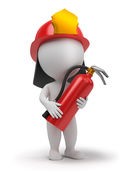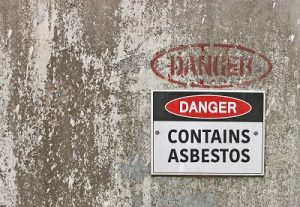
Fire Prevention and Control Toolbox Talk
Why have this talk? Fire Prevention and Control Toolbox Talk. Fire kills and injures many people every year. All employees should be aware of their responsibilities to prevent fires and everyone must know what to do in the event of a fire.
What will this talk cover? Fire prevention, actions to take on discovering a fire and what to do if a fire takes hold.

REMEMBER: Be aware of the surroundings in your workplace and familiarise yourself with the escape routes and emergency procedures. You won’t have time if a fire breaks out.
Contact us if you require further information.

Asbestos Toolbox Talk
Why have this talk? Asbestos Toolbox Talk. Asbestos is a naturally occurring mineral and because of its excellent fire retarding and insulating properties it was widely used in the building industry in the 1980s.
Research has shown that breathing in asbestos fibres may cause lung disease and cancer and it is currently the greatest single cause of work-related deaths in the UK with several thousand people dying each year. The delay between asbestos exposure and disease can range between 10 and 50 years.
What will this talk cover? Where you might find asbestos and how to work around it.
| The use of asbestos is now banned but any building that was built before 2000 could have asbestos in it. As long as the material is not disturbed, workers should not be alarmed. If existing asbestos materials are in good condition, they can be left where they are as long as their condition is regularly checked to ensure they do not become damaged. Products where the asbestos is bound tightly (eg asbestos cement sheets or flooring tiles) are less hazardous than products such as pipe lagging which easily give off fibres, but all products need careful handling by trained workers. |
| The only way to reliably check if asbestos is present is to have a sample of the material examined in a laboratory. All potential asbestos-containing materials must be treated with caution. |
Do you have any questions for me?
Contact us for further information.
Why have this talk? Understanding the root causes of accidents allows the organisation to make changes to control measures to prevent reoccurrence in the future.
What will this talk cover? Why accident investigation is important and how to support an investigation.

Accident Investigation Toolbox Talk
If a serious accident or fatality has occurred you will need to shut down the site to prevent further injury and so that equipment/substances, etc can be investigated.
Explain the company policy on when this should happen or who makes the decision.
If you are involved in an accident investigation, whether internal or external, you should:
Do you have any questions for me?
Contact us for further information.

What are the COVID rules for those who are double-vaccinated?
Those who are fully vaccinated will no longer need to self-isolate when coming into contact with someone who has tested positive for the virus from Monday
The Government has confirmed that those who are fully vaccinated with the Covid jab will no longer need to self-isolate if they come into contact with someone who has tested positive for the virus.
This will go ahead from Monday, August 16, meaning anyone fully vaccinated will only need to quarantine if they test positive for Covid themselves. This also applies to those 18 and under, who will not need to legally self isolate from Monday if coming into close contact with someone with the virus.
In the confirmation of the change in rules, the Government said: “Getting two doses of a vaccine has tipped the odds in our favour and allowed us to safely reclaim our lost freedoms”.
What are the rules for those who are double-jabbed from Monday 16th August?
Anyone who tests positive for the virus will still need to legally quarantine until their symptoms improve and after they have tested negative for Covid.
Everyone will still be advised to take PCR tests if they have come into contact with someone who has tested positive for the virus. This is to check they do not have the virus themselves, as the vaccination is not 100% effective.
This includes health care workers, if they test negative through a PCR test they can return to work and will still need to take lateral flow tests for 10 days.
Anyone who was alerted to self-isolate before August 16 and their quarantine days ends after August 16 can leave isolation from Monday.
The new rules only apply to those who have had their second vaccination within 14 days before August 16. Anyone who has had their second vaccine below 14 days before August 16 will still need to self-isolate if they come into contact with someone who has tested positive.
After 14 days after receiving the second vaccination, they can follow the new rules or not needing to self-isolate.
Everyone is still advised to wear masks in busy or enclosed areas, particularly to those who have come into contact with someone who has tested positive and those coming into close contact with someone who tested positive are encouraged to “limit contact with other people” as the Government explained.
People will still be contacted by the NHS Track and Trace system if they have come in contact with someone who has tested positive but will instead be asked to take a PCR test, rather than to isolate.
The NHS Covid app will be able to prove if people have been double vaccinated or if they are under 18 years. Anyone who has not had two doses or a full vaccination course will still have to self-isolate. The self-isolation rules have helped maintain and control the spread of the Coronavirus pandemic.
Speaking about this Health Secretary, Sajid Javid said: “Asking the close contacts of people with COVID-19 to self-isolate has played a critical role in helping us get this virus under control, and millions of people across the UK have made enormous sacrifices by doing this, every single one of these sacrifices has helped us protect the NHS and save lives.”
Take care. Keep safe!
Contact Walker Health and Safety Services Limited for further information.
(Correct on day of posting)
Why have this talk? First aid is emergency aid. It aims to minimise injury and illness until qualified medical help arrives. It can save lives.
What will this talk cover? How first aid is provided by the organisation and what to do if someone falls ill or is injured.
Past blogs of interest
First Aid Cover During Reduced Staffing as a Result of Covid-19 (walkersafety.co.uk)
What Should be in a First Aid Box | Health and safety blog (walkersafety.co.uk)
Do you have first aid training? | Health and Safety Blog (walkersafety.co.uk)
Contact us if you wish to discuss this topic.